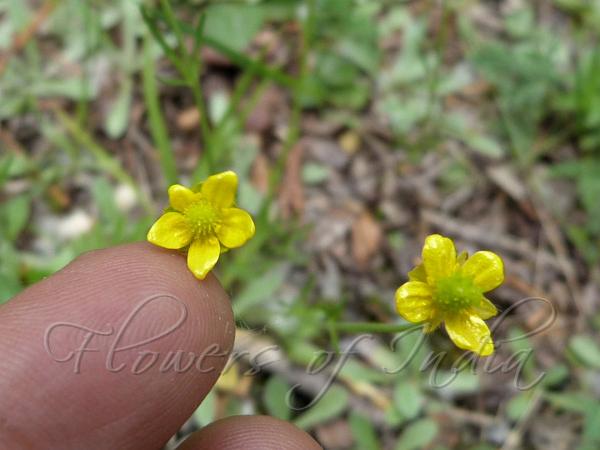|
| Tibetan Buttercup |
|

|

| File size | 195894 |
| Original date | 6/28/12 8:01 AM |
| Resolution | 2560 x 1920 |
| Flash | Flash did not fire, auto |
| Focal length | 4.5mm |
| Exposure time | 1/100s |
| Aperture | 2.8 |
| Focus Distance | |
| Metering Mode | Multi-segment |
| Camera make | Panasonic |
| Camera model | DMC-FZ40 |
| Sensor type | OneChipColorArea |
|
|
|
|
Photo: |
Botanical name: Ranunculus brotherusii var. tanguticus Family: Ranunculaceae (Buttercup family)
Synonyms: Ranunculus tanguticus, Ranunculus affinis var. tanguticus
Synonyms: Ranunculus tanguticus, Ranunculus affinis var. tanguticus
Tibetan Buttercup is a perennial herb with stems 6-25
cm, finely velvet-hairy, branched. The name tanguticus comes
from the Tangut region in Tibet. Basal leaves are 5-10 or more;
leaf-stalk 1.5-5.5 cm, blade multiply dissected, ultimate lobes
linear-lanceshaped or linear. Stem leaves are short stalked or
stalkless, palmately 3-5-divided, segments narrowly linear. Flowers are
borne at branch-ends, 2- or 3-flowers on long slender branches, bracts
leaflike. Flowers are 0.8-1.9 cm in across. Flower-stalks are 1-6 cm,
densely finely velvet-hairy. Receptacle finely velvet-hairy. Sepals are
5, narrowly elliptic, 3-4 mm. Petals are 5, obovate or
obovate-elliptic, 4.5-8.5 x 2-6.5 mm, tip rounded or flat-rounded.
Stamens are numerous; anthers oblong. Aggregate fruit is narrowly
ovoid, 3-6.5 x 3-4 mm. Tibetan Buttercup is found at altitudes of
2200-4200 m, from Ladakh, Nepal to China. Flowering: June-October.
| Identification credit: Tabish | Photographed in Nubra Valley, Ladakh. |
• Is this flower misidentified? If yes,